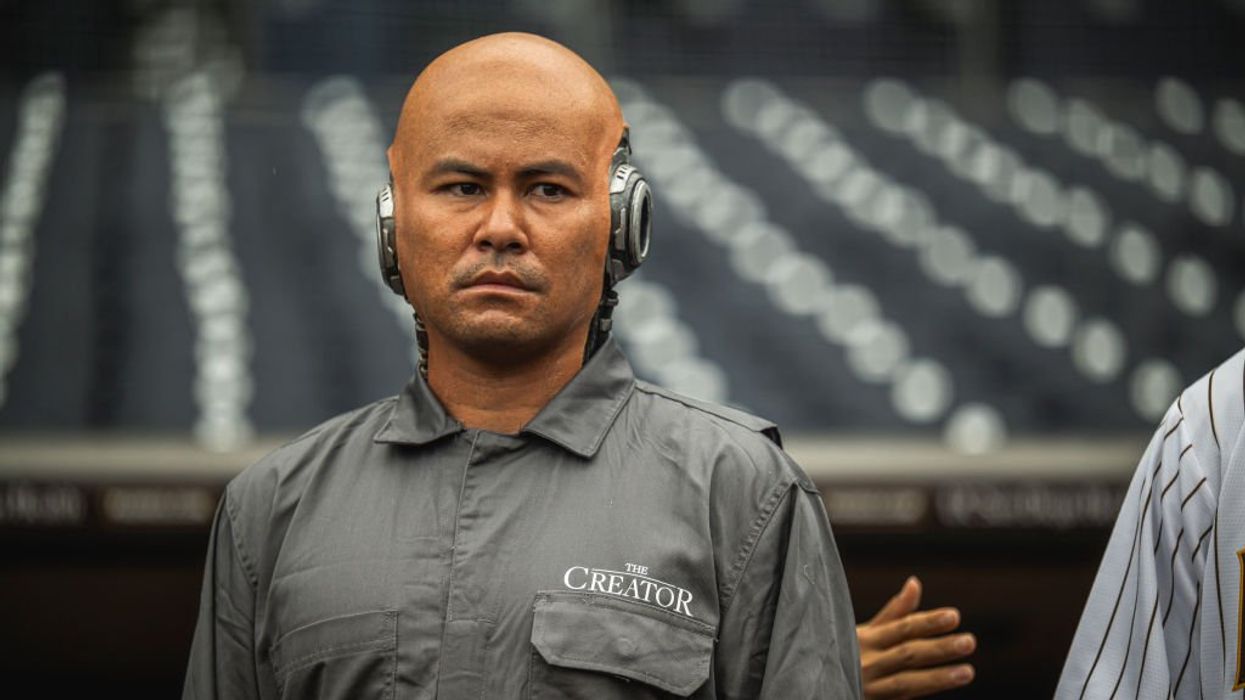
Matt Thomas/Getty Images

“Why can’t they make movies like they used to?” is a common lament about the current state of big-budget Hollywood filmmaking. Once the Wall Street guys took over the studios and looked at global markets, they realized the best financial strategy was to turn out giant tentpole features from familiar franchises: Marvel. Star Wars. Indiana Jones. Harry Potter. Whatever known intellectual properties they could get their hands on became $300 million monstrosities designed to extract money; filmmaking and storytelling took a back seat to shareholder value.
The great sin of these films isn’t their bloated length, juvenile plots, or uncanny valley CGI. It’s how mind-numbingly boring they all are. You can see it etched in the faces of the actors, no doubt staring at a green screen, trying to pretend they aren’t just going through the motions.
It’s strange to review a movie through the prism of dollars, but it’s impossible to understand modern Hollywood without comprehending the money. If the movie can’t sell tickets in China and other foreign markets and bank on merchandising domestically, they don’t bother.
It helps explain why a studio would spend $400 million, including marketing, on the latest “Indiana Jones and the Dial of Feminism” catastrophe. With theaters taking 40% of the ticket price, it needed to make over $650 million just to break even. It ended up losing several hundred million.
It’s so refreshing when a movie like “The Creator” reminds us what great filmmaking is capable of. Gareth Edwards is a master at crafting realistic sci-fi worlds and characters. His 2016 “Rogue One” was the only modern Star Wars film that wasn’t insufferable. Edwards’ budget was only $85 million for “The Creator,” but it looks visually superior to films that cost three or four times more.
The Creator | Official Trailer www.youtube.com
The plot centers on a grizzled soldier, Joshua (John David Washington), who is hunting a super AI in the jungles of Asia. In the near future, robots and artificial technology have become so universal they supplant the workforce and handle most decisions. The AI sets off a nuclear weapon in Los Angeles, killing millions. This cataclysm leads the U.S. to outlaw artificial intelligence and fight a war against the Asian powers that continue to use it. They wage this battle with a floating space station called NOMAD, which drops tactical nuclear weapons on the holdouts.
Joshua, who is deep undercover, discovers the AI has built a superweapon housed in a small, robotic girl. As the rebels and his government hunt him and the android child, he must wrestle with the moral ambiguity of killing this new form of conscious being.
There are some heavy-handed moments, as nukes obliterate the AI and their human supporters from space, and the Vietnam metaphor is a bit on the nose. But “The Creator” succeeds because, at its core, it’s a film wrestling with intelligent questions about how this coming tech will change humanity.
We see people with a genuine love for their machines and robots with authentic character development who wrestle with difficult moral choices. The film looks breathtaking, and everything from the tech to the costumes resonates as if it were from a real future. It is a testament to what Hollywood can do when you leave storytellers alone.
“The Creator” entertains and dazzles while reminding us that we will soon answer unimaginable questions about AI. As technologist Max Anton Brewer told Return last year, it’s possible we “… anthropomorphize it, demonize it, worship it. They will f*** it. They will shoot it with guns.” It will be one of the most awesome tools ever crafted by men.
It remains to be seen whether it will be the last tool we build.